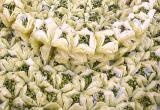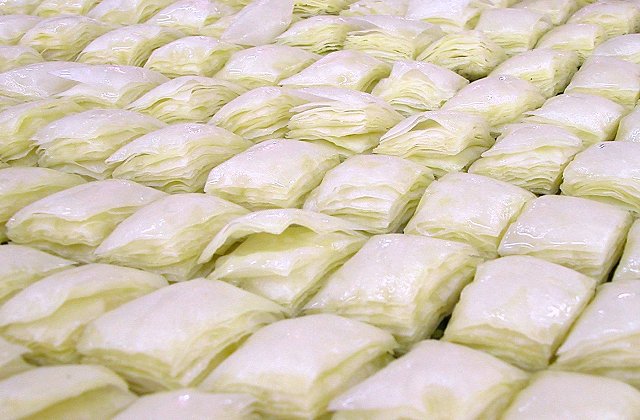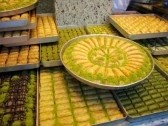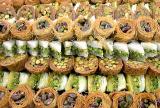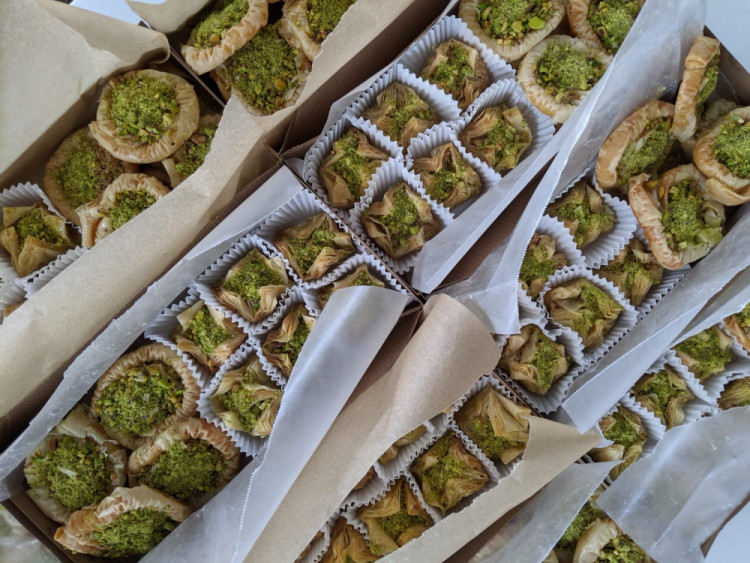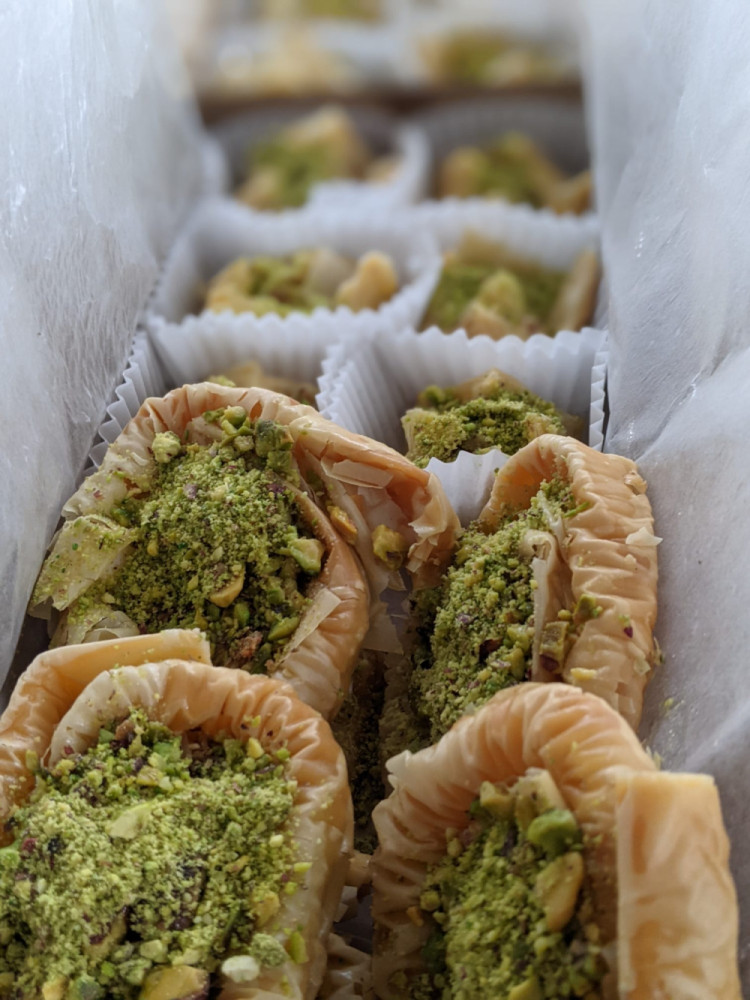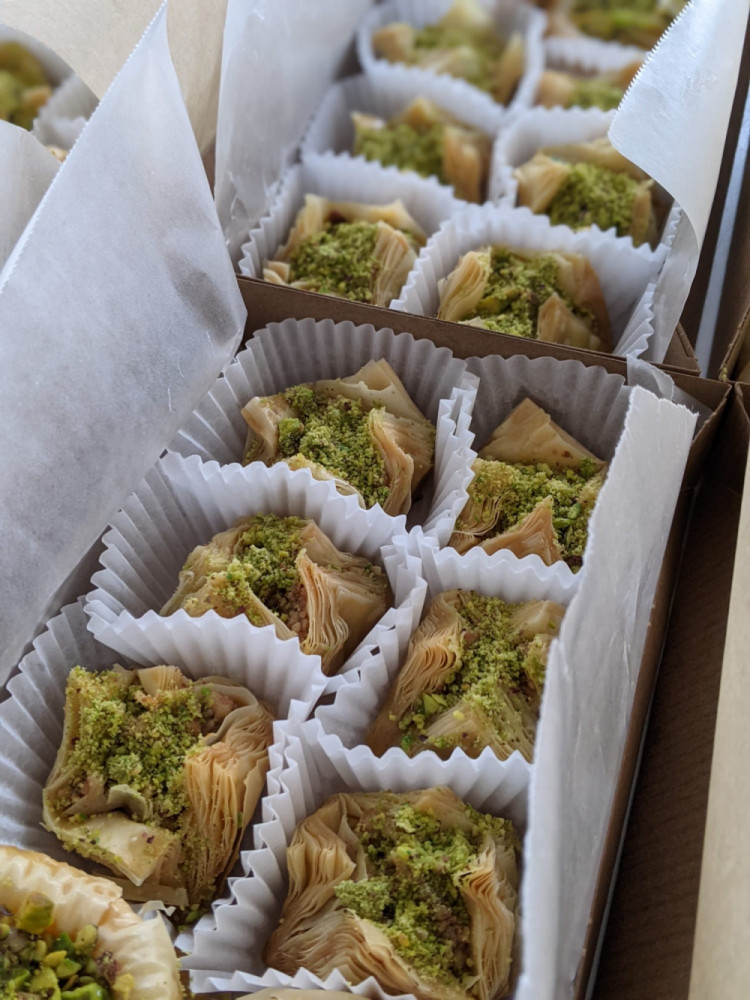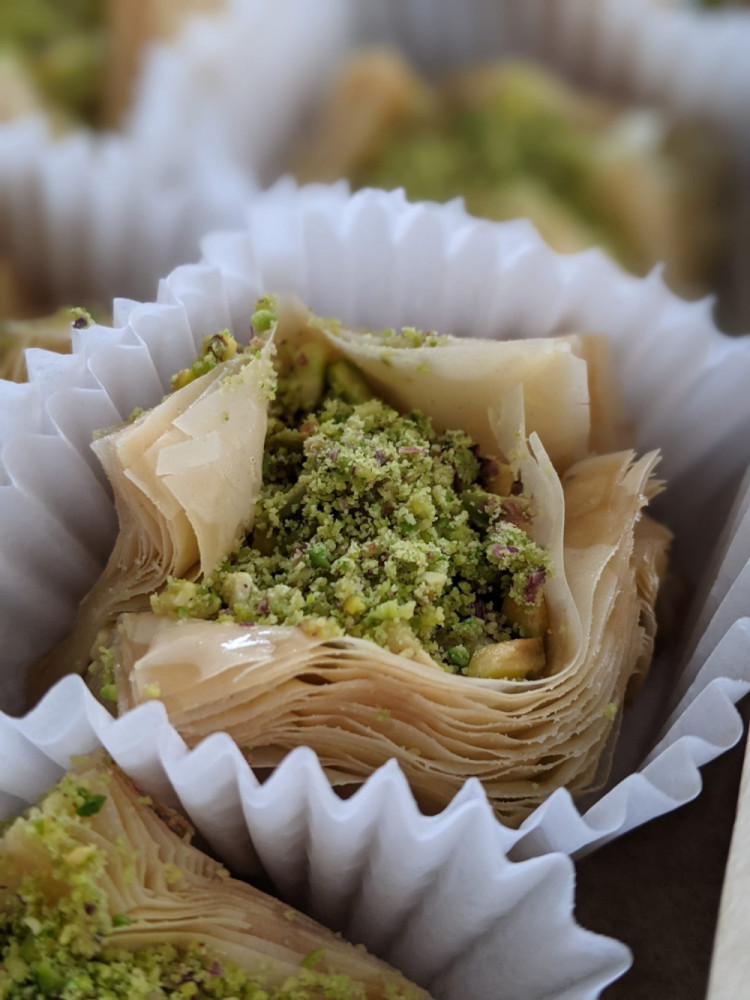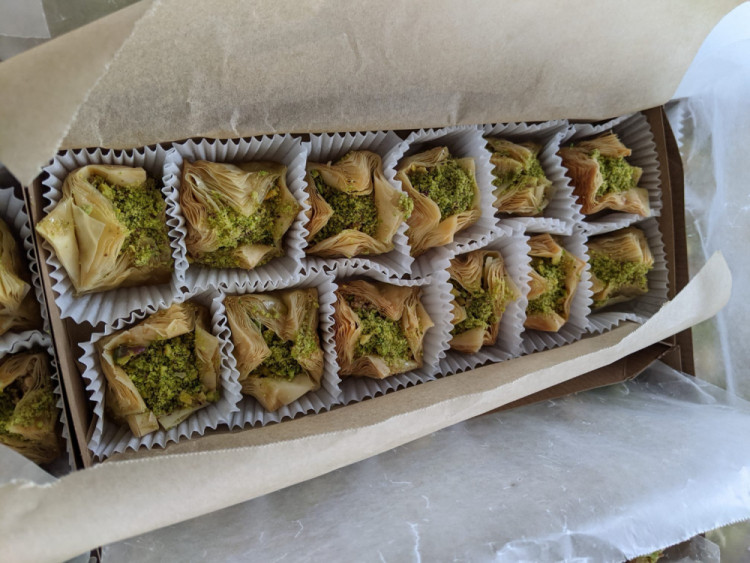Salloum Bakery Ltd®.
Since 1980

NATURAL INGREDIENTS
Our Baklava
Operating under Day Break Division since 1995 - present
Operating under Day Break Division since 1995 - present
Consumers are looking for natural ingredients. Price sensitivity is behind the consumer trend to all-natural bakery products over organic products, which are perceived as too costly, Salloum says. They want to understand the ingredients listed on nutrition labels, but they are less concerned whether or not the ingredients are organic.
Salloum Bakery® is a Natural bakery products especially appeal to younger consumers. "Gen Xers and Millennials are buying more natural and organic products," she says. Nancy Salloum suggests that fresh bakeries should promote their on-premise production and highlight their natural ingredients to appeal more to younger clientele.
File:Baklava - Turkish special, 80-ply.JPEG
File:Baklava - Turkish special, 80-ply.JPEG
The history of baklava is not well documented. It has been claimed by many ethnic groups, but there is strong evidence that it is of Central Asian Turkic origin, with its current form being developed in the imperial kitchens of the Topkapı Palace.[3]
Many Ottoman sweets are similar to Byzantine sweets, using dough, sesame, wheat, nuts and fruits, and some were similar to the Ottoman börek, halva, and so on. Indeed, Vryonis identifies the ancient Greek gastris (γάστρις[4]), kopte (κοπτὴ σησαμίς), kopton (κοπτόν), or koptoplakous (κοπτοπλακοῦς),[5] mentioned in the Deipnosophistae, as baklava, and calls it a "Byzantine favorite".[6] But though gastris contained a filling of nuts and honey, its outer layers did not include any dough, but rather a honey and ground sesame mixture similar to modern pasteli or halva.[7]
SMALLER PORTIONS
Salloum Bakey® bakers have taken unique flavor profiles to a new level with outlandish combinations, such as a mix of BC and Alberta flour flavour . The Pita Bread and Baklava phenomenon also incorporates the trend toward smaller portion sizes for all typpe of events.
"We're seeing strong demand for smaller portions and single-serve products," Salloum says. She attributes this buying trend to smaller family households as well as consumers seeking lower-cost products during tough economic times.
LOWER-PRICE OPTIONS
The recession is causing consumers to change their food shopping patterns, both overall and at in-store bakeries. According to a study by Mintel, some 34 percent of respondents say they are buying from in-stores less often due to the economy.
"People are trading down in the bakery," Salloum says. Rather than purchasing a 25 box of large Pita size or 10 psc of Baklava or Varieties of Pies, they are choosing half of the quantity, for example. Offering smaller sizes of big-ticket items is key to maintaining customers healthy and returning.
She does not suggest lowering all prices across the board. Instead, simply offer some lower-priced options to get customers in your door or department. Once you have them, the fresh-baked aroma and appearance of the Pita Bread bakery should trigger impulse sales regardless of price since 1980.
Many Ottoman sweets are similar to Byzantine sweets, using dough, sesame, wheat, nuts and fruits, and some were similar to the Ottoman börek, halva, and so on. Indeed, Vryonis identifies the ancient Greek gastris (γάστρις[4]), kopte (κοπτὴ σησαμίς), kopton (κοπτόν), or koptoplakous (κοπτοπλακοῦς),[5] mentioned in the Deipnosophistae, as baklava, and calls it a "Byzantine favorite".[6] But though gastris contained a filling of nuts and honey, its outer layers did not include any dough, but rather a honey and ground sesame mixture similar to modern pasteli or halva.[7]
SMALLER PORTIONS
Salloum Bakey® bakers have taken unique flavor profiles to a new level with outlandish combinations, such as a mix of BC and Alberta flour flavour . The Pita Bread and Baklava phenomenon also incorporates the trend toward smaller portion sizes for all typpe of events.
"We're seeing strong demand for smaller portions and single-serve products," Salloum says. She attributes this buying trend to smaller family households as well as consumers seeking lower-cost products during tough economic times.
LOWER-PRICE OPTIONS
The recession is causing consumers to change their food shopping patterns, both overall and at in-store bakeries. According to a study by Mintel, some 34 percent of respondents say they are buying from in-stores less often due to the economy.
"People are trading down in the bakery," Salloum says. Rather than purchasing a 25 box of large Pita size or 10 psc of Baklava or Varieties of Pies, they are choosing half of the quantity, for example. Offering smaller sizes of big-ticket items is key to maintaining customers healthy and returning.
She does not suggest lowering all prices across the board. Instead, simply offer some lower-priced options to get customers in your door or department. Once you have them, the fresh-baked aroma and appearance of the Pita Bread bakery should trigger impulse sales regardless of price since 1980.
